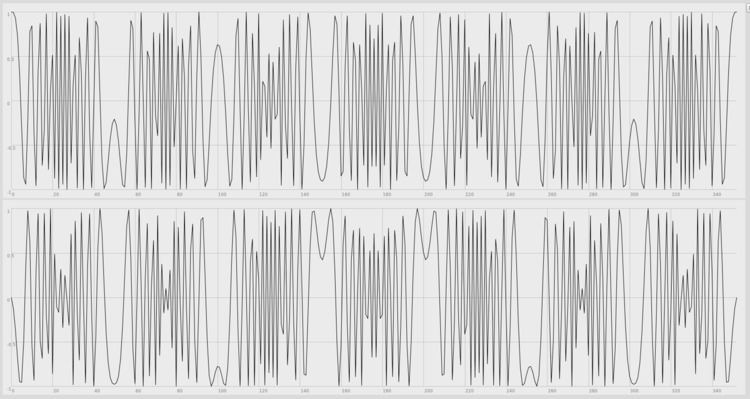 | ||
A Zadoff–Chu (ZC) sequence, also referred to as Chu sequence or Frank–Zadoff–Chu (FCZ) sequence, is a complex-valued mathematical sequence which, when applied to radio signals, gives rise to an electromagnetic signal of constant amplitude, whereby cyclically shifted versions of the sequence imposed on a signal result in zero correlation with one another at the receiver. A generated Zadoff–Chu sequence that has not been shifted is known as a "root sequence".
Contents
These sequences exhibit the useful property that cyclically shifted versions of themselves are orthogonal to one another, provided, that is, that each cyclic shift, when viewed within the time domain of the signal, is greater than the combined propagation delay and multi-path delay-spread of that signal between the transmitter and receiver.
The complex value at each position n of each root Zadoff–Chu sequence parametrised by u is given by
where
Zadoff–Chu sequences are CAZAC sequences (constant amplitude zero autocorrelation waveform).
They are named after Solomon A. Zadoff and D. C. Chu. Note that the special case
Properties of Zadoff-Chu sequences
1. They are periodic with period
2. If
3. The auto correlation of a Zadoff–Chu sequence with a cyclically shifted version of itself is zero, i.e., it is non-zero only at one instant which corresponds to the cyclic shift.
4. The cross-correlation between two prime length Zadoff–Chu sequences, i.e. different values of
Usages
Zadoff–Chu sequences are used in the 3GPP LTE Long Term Evolution air interface in the Primary Synchronization Signal (PSS), random access preamble (PRACH), uplink control channel (PUCCH), uplink traffic channel (PUSCH) and sounding reference signals (SRS).
By assigning orthogonal Zadoff–Chu sequences to each LTE eNodeB and multiplying their transmissions by their respective codes, the cross-correlation of simultaneous eNodeB transmissions is reduced, thus reducing inter-cell interference and uniquely identifying eNodeB transmissions.
Zadoff–Chu sequences are an improvement over the Walsh–Hadamard codes used in UMTS because they result in a constant-amplitude output signal, reducing the cost and complexity of the radio's power amplifier.
